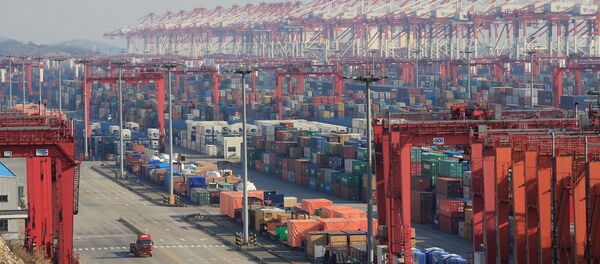Predicting a change in the economic cycle is always fraught with risks. Even renowned economists have gone wrong with their predictions many times. An exercise of this sort is tougher than predicting an earthquake in a particular seismic zone. However, based on economic data, we have made an attempt here to assess how valid the fear of global recession is.
As of now, the global economy seems to be in a spot of bother. The near inversion of the US yield curve as well as a sharp 16% decline from an all-time high for the S&P 500 have heightened these fears. This is not restricted to the US alone; the data indicate that China's growth rate may be decelerating; Japan and Europe (especially Germany) are also showing signs of fatigue. According to the NBER, the longest business cycle expansion in the US lasted for 120 months, from March 1991 to March 2001. Starting in June 2009, the current expansion is the second longest and questions about how long the business cycle will last are natural.
READ MORE: ‘Chinese Exporters Are Trying to Stuff the Basket’ – Professor
Adding to these data points from China, data coming in from the US is also troublesome. While the 38% drop in oil prices reflects a glut in supply, a slowdown in demand cannot be overlooked.
The International Energy Agency forecasts oil demand growth of 1.4 million barrels per day in 2019, after an estimated increase of 1.3 mbpd. The US manufacturing PMI has declined from 56.5 in April to 53.9 in November, indicating a deceleration in growth rates.
Since 2009, the US Fed had been pumping liquidity into the financial system. The Fed opines that the US economy has strengthened; it has been reducing the size of its balance sheet by USD 50 billion per month. The US Fed Chairman has stated that the current reduction programme of the Fed balance sheet will continue. This is in addition to tightening via increasing policy rates. A recession has been preceded by an inversion of the yield curve, but right now the 10-year yield is higher than the 2-year yield by 13.5 bps. The last two recessions were triggered by rate tightening; we believe current US rates are at the lower end of the "neutral" rate.
READ MORE: Hopes of Insect Food Boom Crushed as 'Europe's Largest' Factory Closed Down
With the liquidity moving out of the system and with other fundamentals deteriorating, fears are rising. The CBOE VIX or the "fear gauge" has increased to 28. In India, we have seen that the VIX index has doubled over the last few months and has risen almost 300% (VIX in US) since the beginning of 2018.
In Japan, the Bank of Japan's Governor Mr. Kuroda has highlighted risks to the outlook for Japan's economy and his readiness to infuse more liquidity if needed. At 19, the Tankan survey indicates continued weakness; the Japanese economy declined by 0.6% last quarter. He implicitly indicated banks have room to cut interest rates, increase buying of assets and accelerate the pace of printing money.
However, while growth is slowing down, we are far from the cusp of a recession. In the Bar Analysis grid of US, currently 11 out of 19 economic indicators are pointing to positive economic growth; eight indicators are negative. In the US, consumer confidence is near an 18-year high, whereas the unemployment rate, at 3.7%, is at a 40-year low. China has plenty of policy tools at its disposal to counteract a slowdown; its FX reserves are USD 3.1 trillion.
According to the IMF, India is among the few large economies where growth is resilient. The IMF forecasts growth for FY2019-20 to be 7.4%, which is a strong number. Encouragingly, the driver of growth is changing, increasingly led by capex. Gross Fixed Capital Formation (GFCF) increased by 12.5% YoY during Q2FY19; the third consecutive quarter of double-digit growth.
READ MORE: Pound Falls Due to No-Deal Threat After Brexit Vote, BoE Carney Refutes Claims
What does this mean for equities? If the global economy is tipping into a recession, a bear market is a natural outcome. However, our analysis indicates that while we are experiencing a deceleration in growth prospects, a recession is not on the horizon yet. Withdrawal of liquidity and a slowdown in growth prospects mean valuations need to adjust lower. Also, the dispersion in stock returns has been low on account of accommodative policies; stock picking will become more important for portfolios in the coming months.
Lastly, we need to keep a keen eye on economic data, especially from China, in the coming months. In our view, while there may be a deceleration in growth in 2019, we do not rule out the possibility of a global recession on the horizon in the second half of 2020.
The views and opinions expressed in this article are those of the writer and do not necessarily reflect the position of Sputnik.






